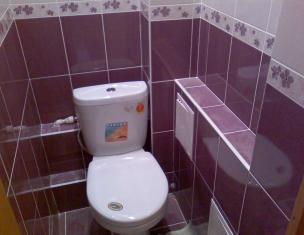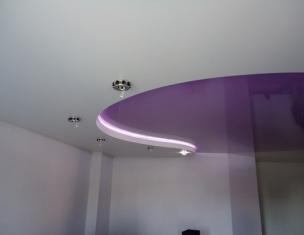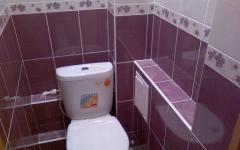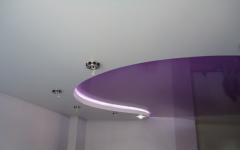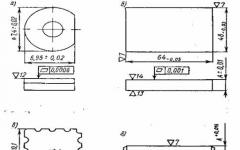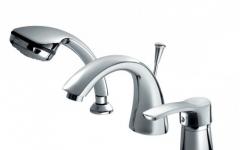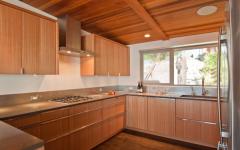Having bought an apartment in an old house or inherited it, the new owners immediately think about overhauling it so that the design and interior match their preferences. And if almost everyone knows what needs to be done with walls and ceilings, then not everyone knows how to repair the floor in their home. The floor can be concrete or parquet, tiled or laminated, with linoleum or other coverings that make the apartment cozy and beautiful. And in order for the dwelling to be not only beautiful, but also safe, the repair of floors in the house must be carried out with special care. At the same time, repairing floors is a great reason to insulate them!
Floor repair in a wooden house
First of all, floor repair must begin with the dismantling of the old coating. Linoleum, parquet or other type of flooring must be torn off and the floorboards inspected. As a rule, if the house is old, then they require a complete replacement, so they should also be dismantled.

After all the work on dismantling obsolete building materials and cleaning the space from debris, you can proceed to the construction of a new floor.
If the foundation has become unusable from dampness from the basement, it must be plastered and brought back to normal before construction work begins on laying the floor. The main materials that allow you to repair the floor in a wooden house:
- dry timber, dimensions 200x200 mm;
- thermal insulation material, sheet or roll;
- floor board;
- antiseptic impregnation for wood;
- various fasteners, including self-tapping screws and mounting foam.
Having decided on the location of the boards in the room, you can proceed with the installation of a wooden beam impregnated with an antiseptic, which will be the basis of the new floor. The step of laying the log depends on the thickness of the floorboards: if the board has a thickness of 40 mm, then the ceilings must be installed in increments of no more than 850 mm. When using thicker boards - the step can be increased to 1 meter and, accordingly, reduced if the thickness of the board is less than 35 mm.

Logs are set strictly according to the level. In places where it is necessary to raise the timber, plywood pads soaked in hot drying oil should be used - it works great for compression and will not shrink over time. These gaskets must be screwed to the lags, in order to prevent them from falling out and subsequent subsidence of the floor. In no case should wedges and spacers be used instead of gaskets - they can decrease in size over time and fall out of their seats, which will lead to subsidence of the floor and creaking. If the floor is being repaired in a private house or in an apartment on the ground floor, and a basement is provided under the room, then this must be taken into account before installing the log. In this case, thermal insulation material will need to be laid between the lags. After fixing all the elements of the base of the floor, you can start laying the insulation.

The choice of thermal insulation for the floor
Insulation must be selected based on the climatic conditions in which the house or apartment is located. If the apartment is on the first floor or the floor is being repaired in your own house, you should take this issue very seriously. The quality of the insulation will depend on the comfortable stay of the household in the home during the cold season. To choose a material that is ideal for specific living conditions, you need to consult with specialists in hardware stores and purchase the appropriate insulation. It can be expanded polystyrene, mineral wool, ecowool, penoizol, etc.
Roll or sheet material is placed between the lags. At the same time, it is important not to leave cracks and voids in order to exclude the passage of cold air from the basement. If logs with a height of 200 mm are chosen, stone wool sheet insulation can be used, if the height of the base is less, the option with rolled thermal insulation laid in one or more layers should be considered. The main thing to be guided by when installing the thermal insulation of the floor is that so that the top board does not touch this material, there should be a small air gap between them. Also, in the case of constant dampness in the basement, which sooner or later will penetrate through the concrete slabs, waterproofing should be laid on the floor before laying the insulation. This is a necessary measure, since all heat-insulating materials tolerate high humidity extremely negatively, they can accumulate moisture in themselves, increasing the risk of wood decay and collapsing at the same time. This, of course, does not apply to polystyrene foam and some other synthetic insulation, but in most cases waterproofing is needed.
Wooden floor installation
After careful laying of the insulation, you can proceed with the installation of a wooden floor. To date, the lining has proven to be excellent. Thanks to special spikes and grooves, the installation of a wooden floor will be very easy and fast, in addition, a ventilation groove is provided at the bottom of the board so that the wood “breathes”.
The board is fixed to the lags with self-tapping screws, while it is necessary to control the absence of gaps between the joints. A properly installed floor should not have even minimal gaps. It is recommended to tighten the screws in such a way that after installation they are not visible, and their heads do not spoil the appearance of the floor.
Having fixed the last board, you can proceed to the next operation, depending on the preferences of the owners of the house.
So, if the owners of the home prefer a parquet board or laminate, in this case, waterproof plywood, 10-15 mm thick, is fixed on the floor, securely screwing it to the boards. It should be noted that between the sheets it is necessary to maintain small gaps in order to exclude friction of the ends against each other and creaking. Next, laminate or parquet is laid on plywood. Laminate has a perfectly smooth surface and does not need further processing, and in the case of laying a floorboard or parquet, a few more repair operations must be performed.
Scraping a wooden floor in a house
To remove possible differences in the height of boards or parquet and perfectly level the floor, a special sanding machine is used, which allows you to remove the top layer of wood, cleaning off possible dirt and unevenness that occurred during the installation of the floor. If the boards have deep scratches and dents, rough sanding with coarse grit sandpaper should be done, and then using finer grit paper to achieve a perfect floor surface.

After sanding the floor and cleaning up debris and dust, you can cover the tree with a special varnish, which will not only give a mirror shine to the surface, but also protect the floor from dirt and minor damage.
Floor repair in a panel house
Of course, everyone knows that a wooden floor is an ideal surface for a person to comfortably stay in it. But it is not always possible to see a tree on the floor. Modern architects and builders, erecting new residential boxes, think little about the issue of interior aesthetics and the health of future owners. That is why in panel houses the floor is mostly concrete, covered with linoleum or vinyl tiles. And when apartment owners plan to renovate their living space, they also think about repairing the floor.
Worn linoleum or peeling tiles must be removed, and the concrete floor cleaned of old glue. Further, the repair of the floor in a panel house can go according to several scenarios.
Floor screed - the basis for high-quality flooring
If the height of the floor level differences made you think about leveling the floors, then you should think about the floor screed. This leveling method can be either dry, semi-dry or wet. it all depends on the material used. With a dry floor screed, expanded clay is used, which is covered with gypsum fiber boards. The main advantage is the deadlines, ease of construction and parallel floor insulation.
With a semi-dry screed, the solution is kneaded in such a way that it contains very little water. Such a screed dries faster than wet, and the process of its implementation is less laborious.

Sand and cement, sometimes with the addition of plasticizers, are the basis for a wet screed. Expanded clay is added to the mixture to insulate the floor. This method is one of the most accustomed, but it will not work in cases where it is impossible to create additional loads on the floor slabs, and such a screed dries up to 30 days.
Self-leveling floors are considered a novelty in the field of flooring. Polymer mixtures are quite easy to prepare, and the installation of self-leveling floors requires much less effort than any of the floor screeds.

It is important to properly prepare the base floor, prime it, follow the technology of mixing the mixture and all the necessary parameters for humidity and temperature in the room. Polymer blends are also called self-levelling. Such a solution is simply poured onto the floor, focusing in some cases on beacons, and distributed over the floor. So you can quickly level the floor, which is then covered with linoleum, tiles and whatever. And you can use only polymers and, after the starting coating, fill in the finishing one as well. Self-leveling floors allow you to radically change the interior of your home. After all, you can make not only one-color floors, but also floors with a pattern - the so-called 3D floors.

In itself, such a floor is already a work of art, and from the point of view of practicality, it is generally irreplaceable. One drawback: such floors will be expensive. But, as an option, they can be filled in a small area - in the kitchen, bathroom and even on the balcony.
Linoleum - simple, cheap and fast
One of the most economical and simple floor coverings is linoleum. Indeed, what could be easier than laying linoleum? On a clean, washed floor, glue or mastic is applied and linoleum is laid. The principle of laying linoleum is similar to pasting walls with wallpaper, only the work process takes place in a different plane. It is necessary to monitor the density of gluing linoleum and avoid air bubbles, otherwise a hole from a carelessly moved chair or table will break in that place.
![]()
Vinyl tile - no problem!
One of the easiest and cheapest ways to renovate an old floor is with vinyl tile. The variety of its design allows you to create a very beautiful coating with a minimum of effort. But tiles, like linoleum, laminate, and parquet, must be laid on a perfectly flat surface.

Tiles - durability and beauty
The tile in the hallway or in the kitchen looks very impressive, in addition, it is easily cleaned of various contaminants.
The tile is laid on a concrete floor cleaned of dust and grease stains using an adhesive solution. Before laying the tiles, in order to maintain symmetry, it is best to pre-mark the area and determine its center. In this case, the drawing on the floor will fit into the interior without violating the harmony of the ensemble of the apartment. After the adhesive has hardened, the joints are grouted with special solutions that can completely merge with the color of the tile or, conversely, contrast sharply with it.

Partial floor repair
There is still not enough money for the overhaul of the floor in the old house, inherited, and repair is required today? You can extend the life of a worn floor, and at the same time strengthen your nerves, since creaking floorboards or dangling tiles can piss off even a person with iron restraint.
The resulting gaps between the boards in the floor can be sealed with a special wood putty, and after it dries, carefully clean it. Large gaps must be sealed with wooden slats, previously lubricated with PVA glue, and then carefully hammered into them. A broken or rotten floorboard should be cut out and replaced with a new one, which should fit the size of the opening. It should be remembered that both ends of the board must necessarily lie on the logs and be fixed on them.
If for some reason the tile has peeled off, it must be carefully removed so that it does not burst. Otherwise, you will have to improvise with the remnants of tiles from past repairs or look for similar tiles in hardware stores. After removing the tiles from the floor, carefully remove some of the hardened mortar so as not to damage the remaining tiles. Next, the resulting recess is filled with glue and the tiles are laid, pressing and removing the excess solution squeezed out through the gaps. After the solution hardens, you can grout the joints and in a day the floor will look like new.
Parquet flooring can be easily restored on your own. As a rule, especially damaged elements are replaced with new ones, and planks with scratches and small irregularities are treated with wood fillers. But before repairing cracks, it is necessary to clean the repaired areas from varnish so that the repair mixture holds well. After the putty has dried, you can sand the repaired parquet areas and varnish them.
To strengthen old wooden floors and make sure that they do not creak, you need:
- using a puncher, drill holes in them;
- insert long self-tapping screws;
- beat them with a hammer;
- tighten with a screwdriver.
You will learn the whole process in detail if you watch the video.
Of course, repairing the floor in an old house is a painstaking job that requires some building skills. But for a home craftsman who is familiar with carpentry and metalwork tools, this work will not seem difficult and even the most difficult areas will be repaired perfectly!



